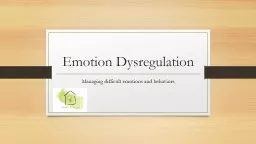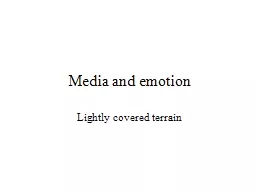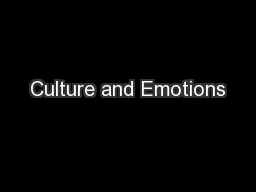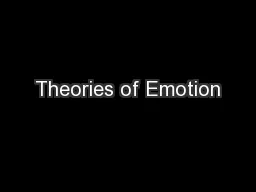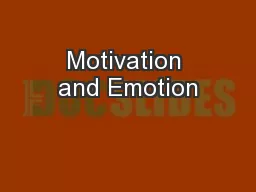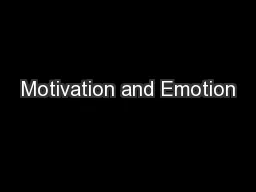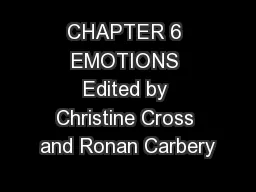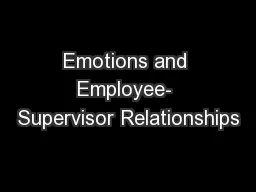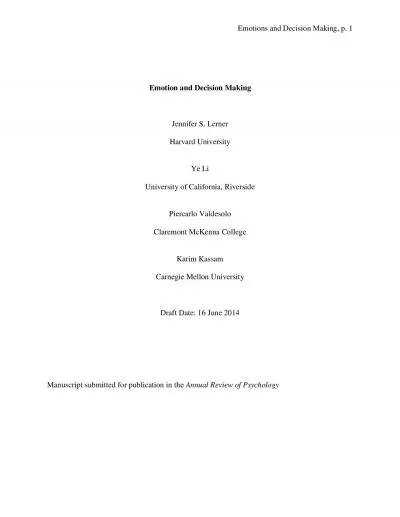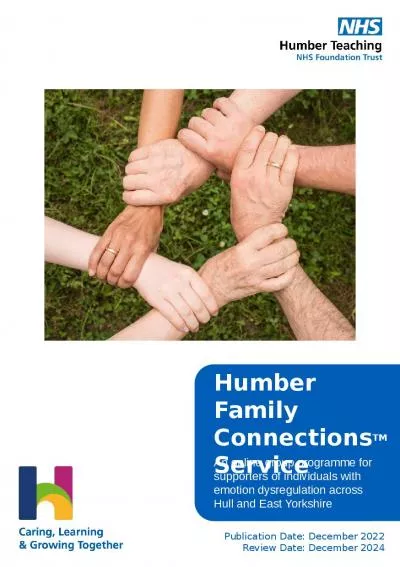PPT-Emotion Dysregulation Managing difficult emotions and behaviors
Author : jane-oiler | Published Date : 2018-03-12
Presentation Objectives Challenge perception of behavioral symptoms and diagnostics Propose a new framework for working with problem behaviors resulting from dysregulation
Presentation Embed Code
Download Presentation
Download Presentation The PPT/PDF document "Emotion Dysregulation Managing difficult..." is the property of its rightful owner. Permission is granted to download and print the materials on this website for personal, non-commercial use only, and to display it on your personal computer provided you do not modify the materials and that you retain all copyright notices contained in the materials. By downloading content from our website, you accept the terms of this agreement.
Emotion Dysregulation Managing difficult emotions and behaviors: Transcript
Presentation Objectives Challenge perception of behavioral symptoms and diagnostics Propose a new framework for working with problem behaviors resulting from dysregulation Increase awareness of physiological changes and role in behavior. Research Group Quantitative Psychology and Individual Differences. University of Leuven, Belgium. A network approach to emotion dynamics in dyads. Peter Kuppens and Eva Ceulemans. KU Leuven - University of Leuven, Belgium. References. What is Emotion?. Physiological arousal. Cognitive interpretation. Subjective feelings. Behavioral expression. Emotion & motivation work together. Emotion = arousal based on situation. Lightly covered terrain. What is emotion?. Widel. y disputed, so we need to simply choose a position. emotion . is a complex of beliefs, arousal and valence of . affect. Features of emotion. Emotions are typically conscious . 1. Therapy. Real life. Dialectical Behavior Therapy: DBT Primer. Marci Martel, Ph.D. LCMHC. 2. DIALECTICAL BEHAVIOR THERAPY (DBT). aims to change. problem behavior. teach new skills. improve quality of life. Week 10. Today’s questions. If “emotions are universal”, what do we really mean?. To what extent does culture influence emotions. ?. We will not cover how emotions . culture (I’m not even sure what that means.). b. y . Benedicta. Mercado Felicia. What’s an emotion?. Emotion is a complex . psychophysiological. experience of an individual as a result of his interactions with the environment. Every human experiences different emotions in one single day. . Based on Barron’s AP Psych Test Prep. Cerepak. 2016. Why do people do what they do?. Motivation theories attempts to answer that question directly!. Motivations are feelings or ideas that cause us to act toward a goal. Chapter Eight. Motivation and Emotion. Motivation:. Biological, emotional, cognitive, or social forces that activate and direct behavior.. Emotion:. a psychological state involving subjective experience, physiological response, and behavioral or expressive response.. Managing the difficult . child. Managing the difficult . boss. Managing the difficult . Physical Therapist. Managing the difficult . (fill in the blank). Stan Bennett MS, OTR/L. CDR USPHS. Therapist Category Day. Learning Outcomes. Understand what emotions are and distinguish between affect, mood and emotions. Explain the functions of emotions (why do we experience emotions?). Explain the various ways in which emotions have an impact in the workplace. The lived experience of Women Professionals. A Phenomenological Study. Dr. . Jeanette Kersten. University of Wisconsin, Stout. 06-17-11. “The way people talk about their lives is of significance, the language that they use and the connections they make reveal the world that they see and in which they act” (Gilligan, 1993, p. 2).. , p. 1 Emotion and Decision Making Jennifer S. Lerner Harvard University Ye Li University of California, Riverside Piercarlo Valdesolo Claremont McKenna College Karim Kassam Carnegie Mellon Universit Svenja A. Wolf,. Amit Goldenberg, . & . Mickaël. Campo. 2. Background. “. Whether. . it. is . the. . excitement. prior . to. a big game, . the. . dejection. . after. . having. lost a . Humber Family . Connections. TM. . Service. Publication Date: December 2022 . Review Date: December 2024 . Humber Family Connections Service. What is Family Connections?. Humber Family Connections (HFC) is for those who support someone in their life who experiences emotional dysregulation. They could be a friend, relative or colleague of the person with emotional dysregulation. The online group programme runs for 12 weeks with 2 hour weekly sessions and some homework between sessions. It follows the programme developed by NEA-BPD (National Education Alliance for Borderline Personality Disorder) in the United States..
Download Document
Here is the link to download the presentation.
"Emotion Dysregulation Managing difficult emotions and behaviors"The content belongs to its owner. You may download and print it for personal use, without modification, and keep all copyright notices. By downloading, you agree to these terms.
Related Documents

